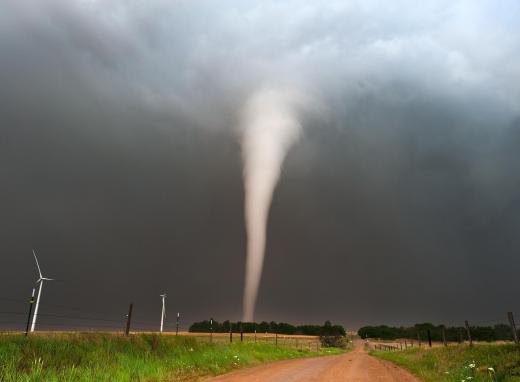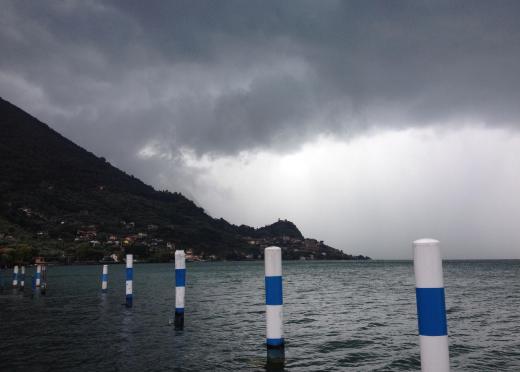What are Gravity Waves?
Gravity waves are wave-like movements of air in the earth's atmosphere, which are caused by gravity. As distinct from most air movements, gravity waves are not horizontal, but rather vertical motions in an air mass. Gravity waves, in terms of their motion, act somewhat like waves on the surface of water. Their effects are generally not felt by us, but at times they can cause a rotating thunderstorm to rotate faster, thereby spawning a tornado.
The presence of the word "gravity" in "gravity waves" can make them seem more complicated than they really are. They are also not to be confused with gravitational waves, which are part of the study of astrophysics. The best way to think about a gravity wave is to imagine a pebble thrown into a pond. The water was stable and calm before, but the rock creates ripples which propagate outward and produce an up-and-down motion in the water. Gravity waves are essentially the same thing, but they occur in air rather than water.

For a gravity wave to occur, there must be something to trigger it. Just like the rock thrown into a pond, a mountain or a thunderstorm can disturb otherwise stable air to create a gravity wave. One of the visible effects of gravity waves is a cloud pattern with rows of clouds alternated by spaces of clear air in between. These alternating rows show the places where the air is rising, and where it is sinking as a result of the wave.

The air surrounding the trigger must be relatively stable for a gravity wave to be generated. If, for example, a mountain pushes air upward as the air goes over it, and the air is already unstable, it will continue to rise rather than sinking back down. If a pattern is not created where rising air peaks and then sinks back down again, then there is no gravity wave. When the conditions are right for gravity waves to be created, they can have some interesting effects.
Thunderstorms rotate as they move across a landscape, due to the air currents present inside them. If a gravity wave comes into contact with a thunderstorm, the alternating pressure differences cause the storm to increase its rotation speed, becoming stronger. A series of gravity waves, or even just one strong one, can cause the storm to rotate fast enough and become powerful enough to produce tornadoes. Other conditions must be present in the storm as well, in order for it to produce a tornado, but gravity waves can be an important part of the recipe.
AS FEATURED ON:
AS FEATURED ON:












Discussion Comments
This is some interesting stuff. I have never heard of gravity waves before but I thought it had to do with something underground like earthquakes. It is quite amazing. Thanks for your work.
Thunderstorms and gravity waves:
Maybe all this stuff about gravity waves is nonsense. Everybody knows storms are signs of the gods' displeasure at short trousers on women and girls. Simple and obvious.
Repent and give up on all this science garbage!!
Best Wishes,
TB
Post your comments